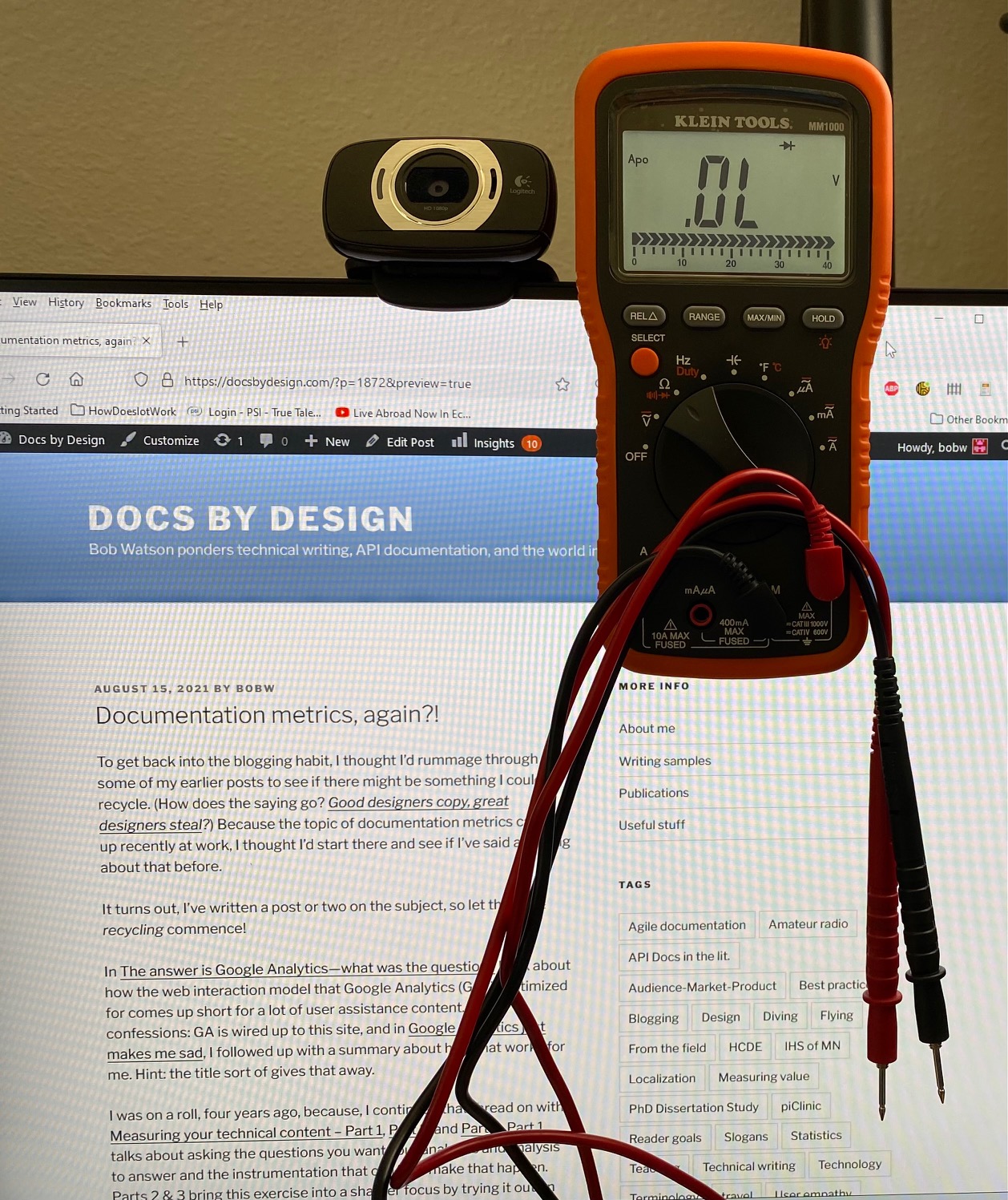To get back into the blogging habit, I thought I’d rummage through some of my earlier posts to see if there might be something I could recycle. (How does the saying go? Good designers copy, great designers steal?) Because the topic of documentation metrics came up recently at work, I thought I’d start there and see if I had said anything about that before.
It turns out, I’d written a post or two on the subject, so let the theft recycling commence!
In The answer is Google Analytics—what was the question? I talk about how the web interaction model that Google Analytics (GA) is optimized for comes up short for a lot of user assistance content. True confession: GA is wired up to this site, and in Google Analytics just makes me sad, I followed up with a summary about how that works for me. Hint: the title sort of gives that away.
The premise of conflicting models came from a paper that my Ph.D. advisor and I wrote about the challenges of collecting useful data about your non-funnel-oriented web content. I posted a blogified version of the published paper in the series on Readers goals. Basically, if the reader’s reason for reading an article is to accomplish a goal that’s outside of the documentation, it’ll be difficult to measure how the documentation helped that goal from inside of the documentation.
I was on a roll, four years ago, because, I continued with Measuring your technical content – Part 1, Part 2, and Part 3. Part 1 talks about asking the questions you want your analytics and analysis to answer and the instrumentation that can help make that happen. Parts 2 & 3 bring this exercise into a sharper focus by trying it out on getting started topics and tutorials, respectively. That thread addresses some of the challenges that you might encounter along the way in Measuring your technical content – What about…?
Continue reading “Documentation metrics, again?!”




